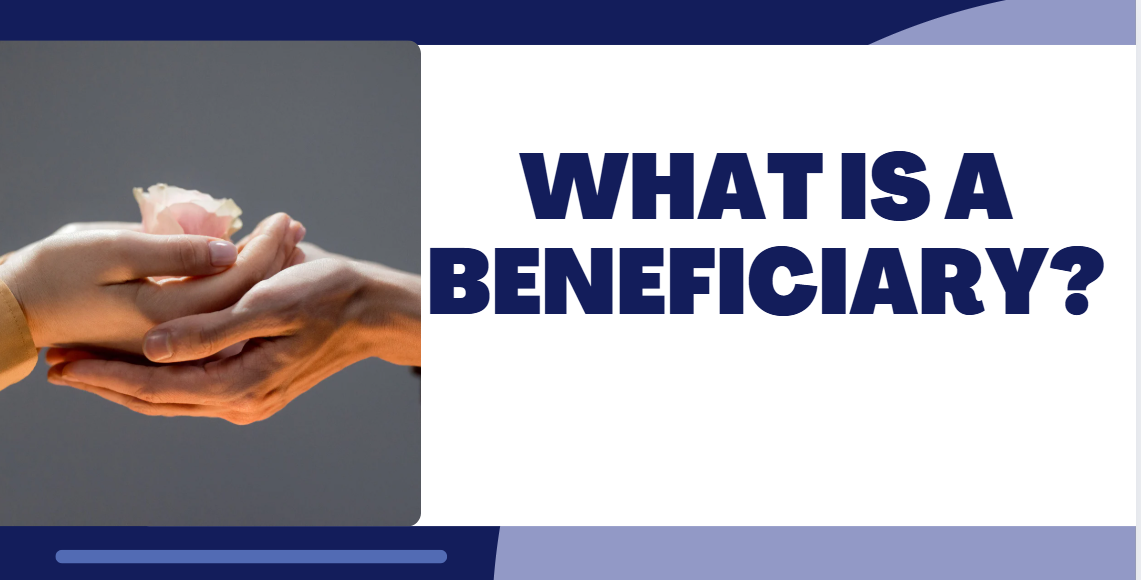A beneficiary is a person or entity that receives benefits, assets, or proceeds from a will, trust, insurance policy, retirement account, or other financial arrangement. The beneficiary is named by the policyholder or account holder and gains legal rights to receive the specified assets upon a certain event, usually the death of the individual.
In simple terms, if you name someone as a beneficiary in your life insurance or will, that person will receive the benefits when you’re gone.
Types of Beneficiaries
1. Primary Beneficiary
This is the first person or entity entitled to receive the benefit. If this person is alive or valid at the time of the claim, they get 100% of the benefit (or the specified share).
2. Contingent (Secondary) Beneficiary
They receive the benefit only if the primary beneficiary cannot (due to death or refusal). It’s a backup plan for distribution.
3. Revocable Beneficiary
The policyholder can change the beneficiary at any time without the beneficiary’s permission.
4. Irrevocable Beneficiary
Once named, they cannot be removed without their consent. This type is often used in legal settlements or divorce agreements.
Read This..Travel Insurance for Seniors: Complete Guide 2025(Updated)
5. Per Stirpes Beneficiary
A method where the beneficiary’s children inherit if the beneficiary dies before the asset holder.
Where is a Beneficiary Used?
Beneficiaries are commonly named in:
| Financial Instrument | Purpose |
|---|---|
| Life Insurance | Pays death benefits to the named beneficiary. |
| Will | Distributes assets to heirs/beneficiaries upon death. |
| Trusts | Manages and distributes property as per trust terms. |
| Retirement Accounts (401k, IRA) | Names who will receive the funds. |
| Pension Plans | Provides financial benefits to survivors. |
| Bank Accounts (Payable on Death) | Directs who receives money after the account holder’s death. |
Why is Naming a Beneficiary Important?
- Avoids Probate: Assets go directly to the beneficiary without court delays.
- Legal Clarity: Prevents disputes among heirs.
- Ensures Wishes are Met: Ensures your assets go to intended individuals or organizations.
- Tax Planning: Proper structuring can reduce estate or inheritance taxes.
Mistakes to Avoid When Naming Beneficiaries
- Not updating the beneficiary after divorce, death, or new family additions.
- Naming minors without a guardian or trust setup.
- Failing to specify percentages among multiple beneficiaries.
- Not naming a contingent beneficiary.
Real-Life Example
Case: John’s Life Insurance Policy
John named his wife Mary as the primary beneficiary of his $500,000 life insurance. He listed his daughter as the contingent beneficiary. After John passed away, the insurer paid Mary the full amount. If Mary had predeceased John, his daughter would have received the amount instead.
How to Change or Update a Beneficiary
- Log in to your policy or financial account.
- Navigate to the “Beneficiary” section.
- Fill out a new beneficiary form with updated information.
- Submit and confirm receipt from the company.
- Keep a copy for your records.
Tip: Always inform your beneficiary they’ve been named and where the documentation is.
FAQs
1. Can a minor be a beneficiary?
Yes, but it’s advisable to set up a trust or appoint a guardian, as minors cannot legally manage financial assets.
2. What happens if no beneficiary is named?
The asset typically goes through probate and is distributed according to state laws or the will
3. Can I name more than one beneficiary?
Yes, you can name multiple beneficiaries and assign percentage shares (e.g., 50% to each child).
4. Can a beneficiary be changed after death?
No, once the account or policyholder passes away, the named beneficiaries are final unless fraud or dispute is proven.
5. Does the beneficiary have to pay taxes?
Generally, life insurance payouts are tax-free, but certain retirement accounts or investments may have tax implications.
6. Can a beneficiary refuse the benefit?
Yes, this is called a disclaimer. The asset will then go to the contingent beneficiary or be handled by the estate.

